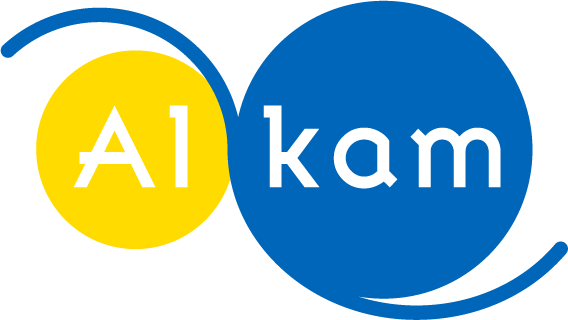Food Packaging Labels: Watch the full webinar recording
- Alkam

- 7 days ago
- 4 min read
In the food industry, labels aren't just a graphic tool, but a true communication tool . They're what speaks to consumers when the product is on the shelf, often amid dozens of nearly identical alternatives. An effective label guides choices, inspires trust, creates value, and differentiates the brand.
During the November 12th webinar, led by Stefano Clavenna (COO of Alkam) and Jacopo Mencacci (of Paperplane ), we explored how to design clearer, more consistent, and more effective labels—both for branding and printing. This article contains the recording and a thoughtful summary of all the points covered.
Index
The label as the voice of the brand
The most frequent problems in food packaging
From brand to printed form
Visibility, readability and attractiveness
Materials, finishes and enhancements
Case study: Qualitaly
Conclusions
1. The label as the voice of the brand
An effective label is one that balances four fundamental functions: orienting, informing, reassuring, and engaging . In a context like large-scale retail, where the consumer's attention span is brief, the label guides the entire decision-making process. Its ability to be clear and credible is directly linked to the customer's trust in the brand.
In food service and B2B, however, another factor comes into play: the label becomes a sign of professionalism and reliability towards the buyer, distributor, or operator who will use the product.
In both cases, the label is much more than the sum of its parts: it is the visual synthesis of the brand positioning .
2. The most common problems with food packaging
One of the most recurring issues that emerge in food packaging projects is the difficulty in combining aesthetics, readability, and brand consistency. Many labels are difficult to read because they're overloaded with information, created with insufficient contrast, or in fonts that are too small. Others are aesthetically pleasing, but don't connect with the positioning , creating a dissonance between the perceived image and the actual quality of the product.
A widespread problem is poor shelf differentiation : very homogeneous categories tend to replicate the same visual codes, making it difficult to stand out.
Finally, a lack of good visual hierarchy leads to labels where everything is important and nothing is truly important. The result? Confusion for the consumer and a less impactful impact.
3. From brand to printed form
The design of a label is born from the balance between:
Rules (regulations)
Each country has different specifications: text size, QUID, allergens, nutritional information, mandatory declarations. The slides include useful references for Italy, the EU, and the US.
Before designing, you must always check the regulatory context.
Identity
Brand identity is the tangible form of the brand promise : imagery, typography, color, graphic elements, tone of voice.
Feasibility
Every project must deal with:
color limits of printing,
materials and finishes,
safety areas,
folds and dies,
production costs.
Ignoring these elements leads to rework, delays, and avoidable costs.
4. Visibility, readability and attractiveness
A label's ability to guide the consumer's eye depends on its visual hierarchy , that is, the order in which information is perceived. Some categories favor a "Z" pattern, others an "F" pattern. The important thing is to prioritize the elements that must stand out immediately: product name, brand, claim, differentiators.
Typography plays a crucial role. Fonts that are too elaborate or too thin can compromise readability, especially on small formats. The same goes for color: color is eye-catching, but it's contrast that makes it readable.
Finally, space management is what determines clarity and order: an airy layout communicates professionalism and quality, while a crowded one conveys uncertainty.
5. Materials, finishes and finishing
The choice of material is both a technical and strategic decision. Natural papers convey craftsmanship, plastic films guarantee durability and practicality, and transparent materials convey modernity and lightness. Each material has a different impact on color rendering, readability, and brand perception.
Finishes—such as foil, UV coating, embossing, and soft-touch—add a layer of tactile and visual experience that can radically transform the way a product is perceived. A well-applied finish can instantly elevate the product's positioning , without altering its content.
6. The case study: Qualitaly
The Qualitaly project demonstrates how a well-designed packaging can generate tangible results. The goal was to make a vast range—over 700 products—clearer, more legible, and more recognizable.
Through a revision of the visual hierarchy, a more functional color palette and a strong alignment between design and production, the brand has achieved:
significant growth in sales,
a stronger shelf presence,
the recognition of the Marca Innovation Award 2024 .
It is practical proof that a methodically revised label can have a real impact on consumer behavior.
7. Conclusions
Labels are a strategic tool: they communicate, orient, reassure, and sell. To be successful, they must combine branding, design, readability, materials, and printing into a single, cohesive project. In a competitive market like the food industry, even a small detail can make a difference: a more legible font, a more consistent color, a more suitable material.
The webinar demonstrated how to approach each aspect in a comprehensive and professional manner, offering useful tools for those working in marketing, packaging, or quality.
Need help with your product labels? Contact us by clicking here.




Comments